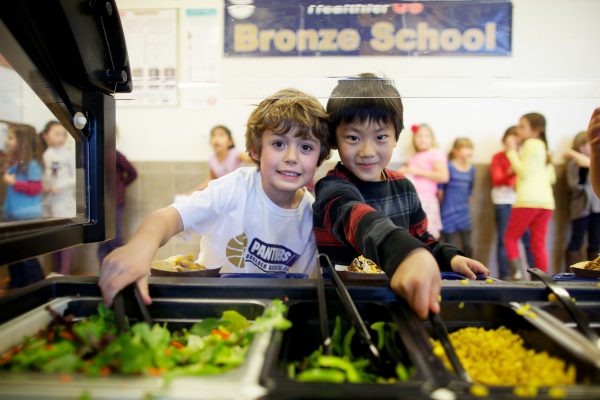By Mason Fitzpatrick
There are 15 million United States households suffering from food insecurity. Rates of childhood obesity have approximately tripled since 1970. There are just over 2 million farms in the country, but the average agricultural worker and owner is seeing their economic standing decline year by year, even as the aforementioned millions of people go hungry. The process of feeding a country requires a vast network, and each of the nodes in that network is experiencing systemic issues on some level. The Center for Good Food Purchasing“unites stakeholders from across the food system around shared values and strategy.” The organization focuses on responsible food procurement, aiming to, “transform the way public institutions purchase food.” Through increased coordination among these stakeholders, policy advocacy, and leveraging buying power and expertise, they strive to, “drive change in the food industry towards suppliers that support our values.”
These values include local economies, nutrition, a valued workforce, environmental sustainability, and animal welfare. This is a diverse set of parameters on the surface, but each of these values is essential to pushing the food system in a more thoughtful and dignified environment, whether that’s for local business, children, workers, the planet, or animals. The size of the market means that when these criteria are met, there is potential for significant improvement in the lives of millions.
This impact can be seen in the Los Angeles Unified School District. Since implementation of their Good Food Purchasing Program in 2012 the following outputs have been measured:
- $12 million redirected to purchase local produce
- 45 million annual servings of bread and rolls made from locally sourced wheat
- 150 new well paying food-chain jobs, and higher wages and improved working conditions for 160 truck drivers
- $20 million contract awarded for chicken raised without administration of certain antibiotics
- 15% decrease in spending on meat
From this success came the Center for Good Food Purchasing to guide national expansion of the program. The model was developed by groups of stakeholders from across the network to ensure scalability and replicability. There are four key steps to this process: assess baseline, set goals, track progress, and celebrate success. Resources are provided at each of these step so the process can be adhered to regardless of location, size, or financial standing.

In the first year coalitions established the program as a priority in Austin, Chicago, Cincinnati, New York, Oakland,Twin Cities, and San Francisco. Since then those cities have seen further measures taken towards the goals of the program, and Washington DC, Buffalo, NY, and Boulder, CO have joined the program. To date there are now 28 members representing hundreds of organizations across the country. This network together spends nearly $1 billion on food each year. As more and more begin to see the benefit of a food chain that benefits all its members, that billion will grow exponentially, and drive more sustainable and responsible results.


